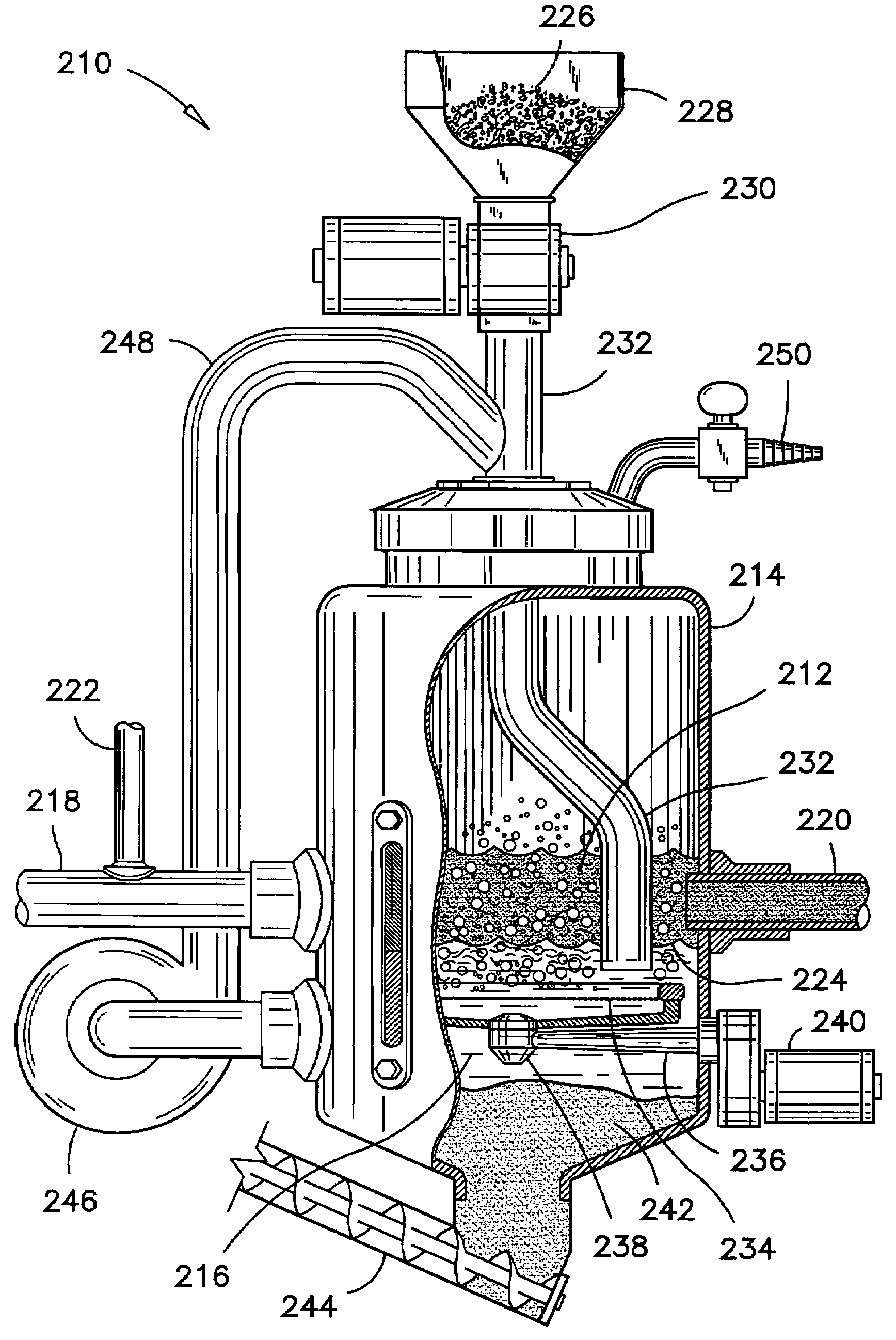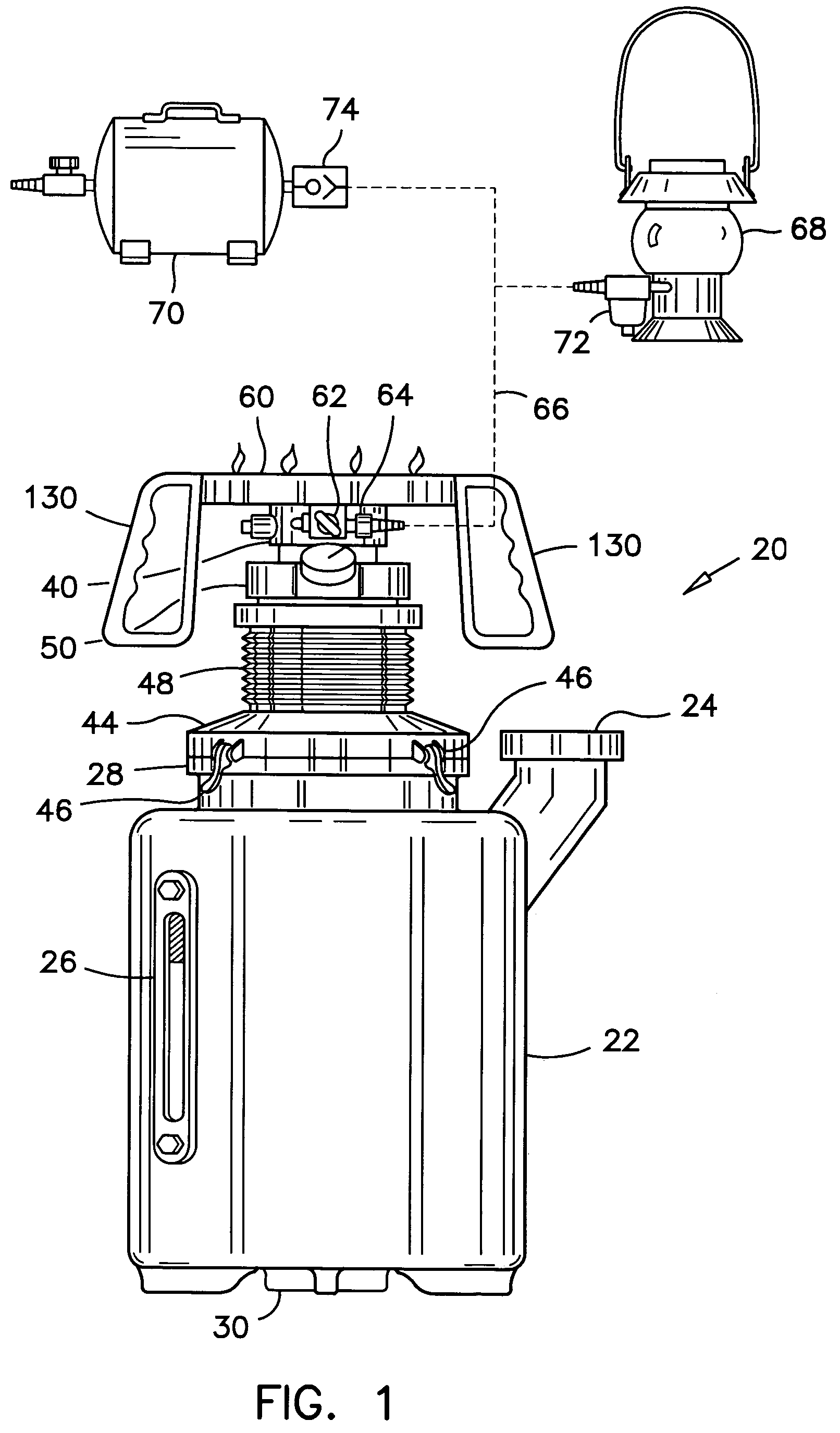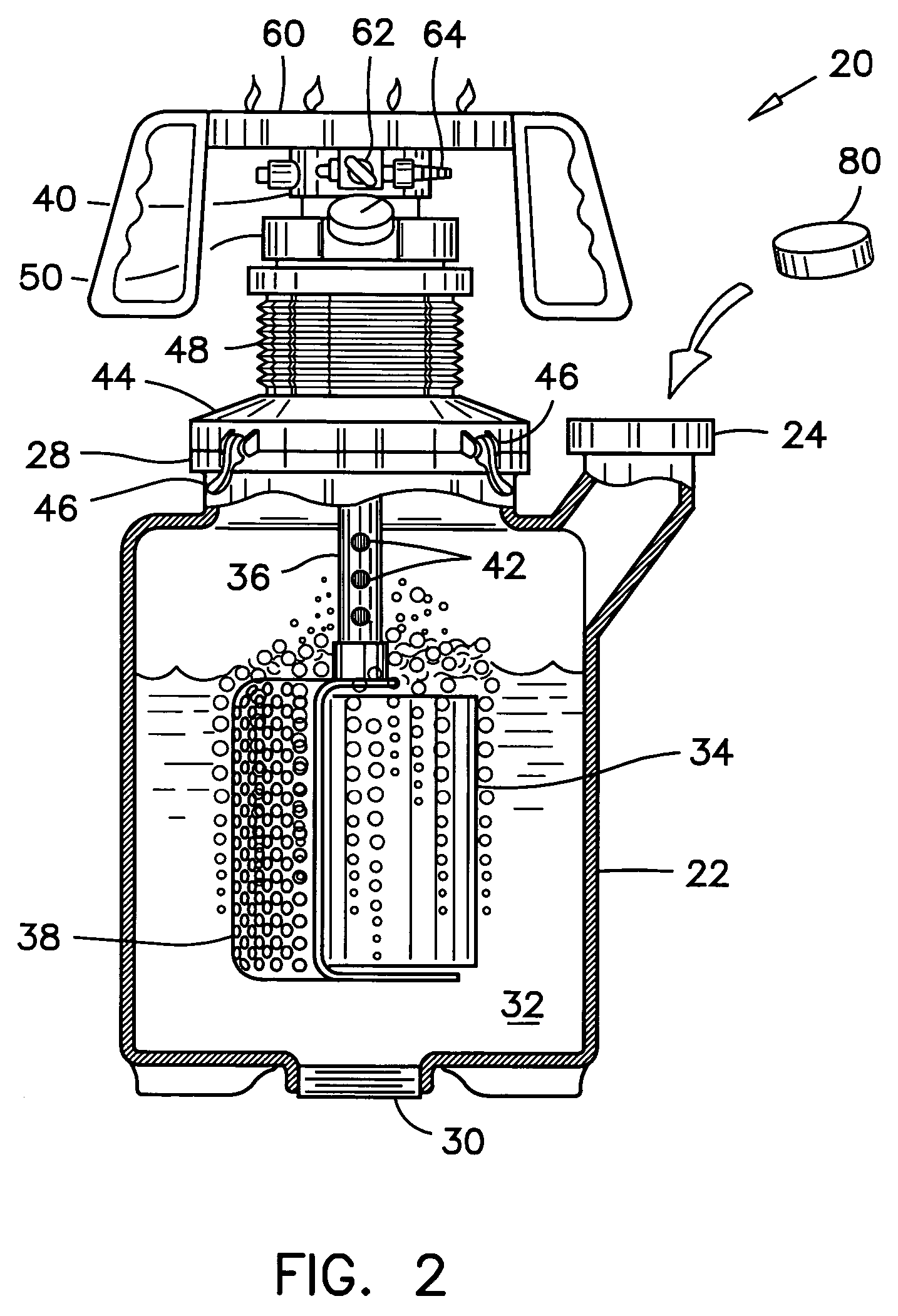Method and apparatus for hydrogenating hydrocarbon fuels
a technology of hydrocarbon fuel and hydrogenation method, which is applied in the direction of liquid chemical process, gas-gas reaction process, liquid-gas reaction of thin-film type, etc., can solve the problems of affecting the reaction, affecting the reaction, and affecting the reaction, etc., and the ability to release hydrogen gas from water at room temperature has never been anticipated or observed by prior inventors
- Summary
- Abstract
- Description
- Claims
- Application Information
AI Technical Summary
Benefits of technology
Problems solved by technology
Method used
Image
Examples
Embodiment Construction
[0043]While this invention is susceptible of embodiments in many different forms, there is shown in the drawings and will be described in details herein a specific embodiment of the method and apparatus according to the present invention, with the understanding that the present disclosure is to be considered as an example of the principles of the invention and is not intended to limit the invention to the embodiment illustrated.
[0044]The production of hydrogen gas according to the present invention is obtained by a reaction of aluminum with water in the presence of sodium hydroxide (NaOH) as a catalyst. The reaction produces a large amount of heat and hydrogen gas.
[0045]The catalyst is mixed with tap water in a proportion of about 225 g. per liter of water. In other words, the sodium hydroxide content of the catalytic solution is preferably about 18% by weight. The catalyst is not chemically consumed in the process.
[0046]The aluminum used in the reaction comprises aluminum foil, ele...
PUM
 Login to View More
Login to View More Abstract
Description
Claims
Application Information
 Login to View More
Login to View More - R&D
- Intellectual Property
- Life Sciences
- Materials
- Tech Scout
- Unparalleled Data Quality
- Higher Quality Content
- 60% Fewer Hallucinations
Browse by: Latest US Patents, China's latest patents, Technical Efficacy Thesaurus, Application Domain, Technology Topic, Popular Technical Reports.
© 2025 PatSnap. All rights reserved.Legal|Privacy policy|Modern Slavery Act Transparency Statement|Sitemap|About US| Contact US: help@patsnap.com



